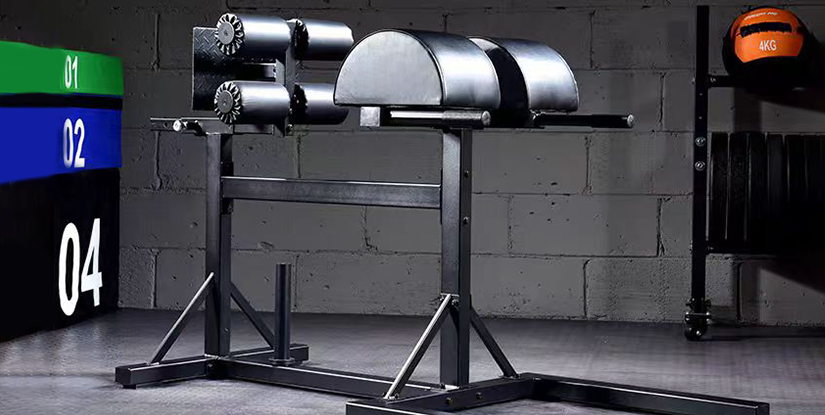Seated Cable Lat Pulldown — Technique, Benefits & Programming

Seated Cable Lat Pulldown
The seated cable lat pulldown is a foundational pulling exercise designed to develop the latissimus dorsi and the upper back while enhancing overall pulling strength. Executed on a cable machine with a bench and thigh pads, this movement provides consistent tension through the range of motion and is adaptable for athletes, recreational lifters, and rehabilitation programs when performed with appropriate load and technique.
Key Benefits
- Targeted development of the latissimus dorsi and teres major for a wider back profile.
- Improved posture and scapular control through controlled eccentric and concentric phases.
- Versatile for hypertrophy, strength, and endurance goals due to variable loading and grip options.
- Lower risk of momentum-related cheating compared to free-weight pull variations.
Anatomy and Primary Movers
The primary muscle worked is the latissimus dorsi. Secondary muscles include the teres major, posterior deltoid, rhomboids, middle and lower trapezius, and the biceps brachii as an assisting elbow flexor. Effective execution emphasizes scapular depression and adduction to maximize lat recruitment.
Setup and Proper Positioning
- Seat height: Adjust so the thigh pads sit snugly against the upper thighs to prevent elevation during the pull.
- Grip choice: Use a slightly wider than shoulder-width grip for balanced lat engagement; narrow or neutral grips shift emphasis to the mid-back and biceps.
- Spine and torso: Maintain a neutral spine with an upright or slightly reclined torso (10–20 degrees) to reduce lumbar shear.
- Scapula: Begin with a small scapular retraction and depression before initiating the concentric pull.
Step-by-Step Execution
- Initiate: Sit, secure the thigh pads, select weight, and take the grip. Create tension by retracting the scapula slightly.
- Pull: Drive the elbows down and back in a controlled path until the bar reaches the upper chest or clavicle area depending on bar and grip.
- Peak contraction: Hold briefly at full contraction with the shoulder blades fully depressed and the chest tall.
- Return: Slowly allow the arms to extend while maintaining scapular control until arms are near full extension without locking the elbows aggressively.
- Breathing: Exhale during the concentric pull and inhale during the eccentric return.
Tempo, Loading, and Programming
Tempo choices alter training stimulus: a 2:1:2 pattern (2s eccentric, 1s pause, 2s concentric) prioritizes time-under-tension for hypertrophy; a 1:0:1 tempo with heavier loads targets strength. Typical rep ranges by goal: 6–8 reps for strength, 8–12 for hypertrophy, and 12–20 for endurance or metabolic conditioning. Frequency of 2–3 sessions per week per muscle group supports progressive adaptation when combined with systematic load increases.
Variations and Progressions
- Wide-grip lat pulldown: Emphasizes the outer lat fiber stretch and width.
- Close-grip/neutral handle: Shifts emphasis to the middle back and biceps, useful for rowing carryover.
- Single-arm cable pulldown: Addresses bilateral asymmetries and improves unilateral control.
- Slow eccentrics or paused reps: Increase time under tension to spur hypertrophy.
- Weighted hold or iso-holds: Develop scapular stability and midline control.
Common Errors and Corrections
- Using momentum: Excessive torso lean reduces lat engagement. Correct by reducing load and focusing on scapular initiation.
- Behind-the-neck pulldowns: Increase risk to the shoulder capsule; avoid and pull to the upper chest instead.
- Elbow flare or excessive internal rotation: Keep elbows pointed down and back to optimize lat recruitment.
- Incomplete range of motion: Ensure controlled full extension and full contraction to maximize stimulus.
- Shoulder shrugging: Maintain scapular depression; do not allow the traps to dominate the movement.
Machine Maintenance and Safety
Inspect cables, pulleys, and the attachment bar regularly for fraying or wear. Ensure the seat and thigh pads are secure and the weight stack pin engages fully. Use smooth, controlled motion and appropriate footwear. When in doubt about load or technique, reduce weight and prioritize quality of movement to prevent injury.
Buying Considerations for Home or Commercial Use
- Build quality: Look for solid pulleys, steel cables, and durable seat padding for longevity.
- Adjustability: A wide range of seat heights and thigh pad adjustments increases suitability for multiple users.
- Attachment types: Multiple handle options (wide bar, V-bar, single handles) improve exercise variety.
- Space and footprint: Consider cable towers or multi-station units depending on available space and budget.
- Warranty and service: Commercial settings require stronger warranties and accessible replacement parts.
Conclusion
The seated cable lat pulldown is a versatile, effective exercise for building the width and strength of the back when performed with intention. Prioritize setup, scapular control, and progressive overload to achieve measurable gains while minimizing injury risk. Integrate variations strategically to address weaknesses and maintain training stimulus over time.
FAQs
- Q: Is seated cable lat pulldown better than pull-ups? A: Both are valuable; pulldowns are more accessible and adjustable, pull-ups are more functional and demanding.
- Q: How often should I perform lat pulldowns? A: 2–3 times per week per training cycle, adjusting volume based on recovery.
- Q: Can lat pulldowns build a V-shaped back? A: Yes, when combined with rows and progressive overload to develop width and thickness.
- Q: What grip maximizes lat engagement? A: A slightly wider-than-shoulder grip with elbows driven down and back increases lat recruitment.
- Q: Are behind-the-neck pulldowns safe? A: Generally no; they can stress the shoulder joint—prefer front chest pulls.
- Q: Should I use momentum to lift heavier? A: No; momentum reduces effectiveness and increases injury risk. Use controlled reps.
- Q: How do I fix elbow pain during pulldowns? A: Reduce load, check grip width, and avoid excessive wrist or elbow flexion; consult a professional if pain persists.
- Q: Can beginners do seated lat pulldowns? A: Yes; start with light resistance and focus on form and scapular control.
- Q: What tempo is best for hypertrophy? A: Moderate tempo with controlled eccentrics (e.g., 2–3s eccentric) and 8–12 rep ranges is effective.

